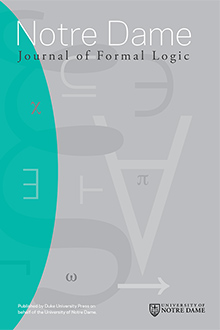Abstract
Logical consequence in first-order predicate logic is defined substitutionally in set theory augmented with a primitive satisfaction predicate: an argument is defined to be logically valid if and only if there is no substitution instance with true premises and a false conclusion. Substitution instances are permitted to contain parameters. Variants of this definition of logical consequence are given: logical validity can be defined with or without identity as a logical constant, and quantifiers can be relativized in substitution instances or not. It is shown that the resulting notions of logical consequence are extensionally equivalent to versions of first-order provability and model-theoretic consequence. Every model-theoretic interpretation has a substitutional counterpart, but not vice versa. In particular, in contrast to the model-theoretic account, there is a trivial intended interpretation on the substitutional account, namely, the homophonic interpretation that does not substitute anything. Applications to free logic, and theories and languages other than set theory are sketched.
Citation
Volker Halbach. "Formal Notes on the Substitutional Analysis of Logical Consequence." Notre Dame J. Formal Logic 61 (2) 317 - 339, May 2020. https://doi.org/10.1215/00294527-2020-0009
Information





